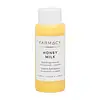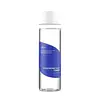What's inside
What's inside
 Key Ingredients
Key Ingredients

 Benefits
Benefits

 Ingredients Side-by-side
Ingredients Side-by-side

Aloe Barbadensis Leaf Juice
Skin ConditioningSaccharomyces Ferment Filtrate
HumectantPropanediol
SolventBetaine
HumectantIsopentyldiol
HumectantWater
Skin ConditioningGlycerin
Humectant1,2-Hexanediol
Skin ConditioningHoney Extract
HumectantCeramide NP
Skin ConditioningAnthemis Nobilis Flower Extract
MaskingPanthenol
Skin ConditioningSqualane
EmollientOpuntia Ficus-Indica Stem Extract
Skin ConditioningArginine
MaskingPolyacrylate Crosspolymer-6
Emulsion StabilisingPolyglyceryl-10 Stearate
Skin ConditioningGlucomannan
Skin ConditioningSodium Benzoate
MaskingPotassium Sorbate
PreservativeCitric Acid
BufferingSodium Phytate
Hydroxyacetophenone
AntioxidantHydrogenated Lecithin
EmulsifyingSucrose Stearate
EmollientCaprylyl Glycol
EmollientMaltodextrin
AbsorbentAloe Barbadensis Leaf Juice, Saccharomyces Ferment Filtrate, Propanediol, Betaine, Isopentyldiol, Water, Glycerin, 1,2-Hexanediol, Honey Extract, Ceramide NP, Anthemis Nobilis Flower Extract, Panthenol, Squalane, Opuntia Ficus-Indica Stem Extract, Arginine, Polyacrylate Crosspolymer-6, Polyglyceryl-10 Stearate, Glucomannan, Sodium Benzoate, Potassium Sorbate, Citric Acid, Sodium Phytate, Hydroxyacetophenone, Hydrogenated Lecithin, Sucrose Stearate, Caprylyl Glycol, Maltodextrin
Water
Skin ConditioningPropanediol
SolventPentylene Glycol
Skin Conditioning1,2-Hexanediol
Skin ConditioningSodium Hyaluronate
HumectantTrehalose
HumectantCaprylyl Glycol
EmollientPanthenol
Skin ConditioningSodium PCA
HumectantButylene Glycol
HumectantBetula Alba Juice
AstringentPortulaca Oleracea Extract
Skin ConditioningGlycerin
HumectantHyaluronic Acid
HumectantAlthaea Officinalis Root Extract
Skin ConditioningAloe Barbadensis Leaf Extract
EmollientBeta-Glucan
Skin ConditioningHydrolyzed Sodium Hyaluronate
Skin ConditioningHydrolyzed Hyaluronic Acid
HumectantSodium Hyaluronate Crosspolymer
HumectantWater, Propanediol, Pentylene Glycol, 1,2-Hexanediol, Sodium Hyaluronate, Trehalose, Caprylyl Glycol, Panthenol, Sodium PCA, Butylene Glycol, Betula Alba Juice, Portulaca Oleracea Extract, Glycerin, Hyaluronic Acid, Althaea Officinalis Root Extract, Aloe Barbadensis Leaf Extract, Beta-Glucan, Hydrolyzed Sodium Hyaluronate, Hydrolyzed Hyaluronic Acid, Sodium Hyaluronate Crosspolymer
 Reviews
Reviews

Ingredients Explained
These ingredients are found in both products.
Ingredients higher up in an ingredient list are typically present in a larger amount.
1,2-Hexanediol is a synthetic liquid and another multi-functional powerhouse.
It is a:
- Humectant, drawing moisture into the skin
- Emollient, helping to soften skin
- Solvent, dispersing and stabilizing formulas
- Preservative booster, enhancing the antimicrobial activity of other preservatives
Caprylyl Glycol is a humectant and emollient, meaning it attracts and preserves moisture.
It is a common ingredient in many products, especially those designed to hydrate skin. The primary benefits are retaining moisture, skin softening, and promoting a healthy skin barrier.
Though Caprylyl Glycol is an alcohol derived from fatty acids, it is not the kind that can dry out skin.
This ingredient is also used as a preservative to extend the life of products. It has slight antimicrobial properties.
Learn more about Caprylyl GlycolGlycerin is already naturally found in your skin. It helps moisturize and protect your skin.
A study from 2016 found glycerin to be more effective as a humectant than AHAs and hyaluronic acid.
As a humectant, it helps the skin stay hydrated by pulling moisture to your skin. The low molecular weight of glycerin allows it to pull moisture into the deeper layers of your skin.
Hydrated skin improves your skin barrier; Your skin barrier helps protect against irritants and bacteria.
Glycerin has also been found to have antimicrobial and antiviral properties. Due to these properties, glycerin is often used in wound and burn treatments.
In cosmetics, glycerin is usually derived from plants such as soybean or palm. However, it can also be sourced from animals, such as tallow or animal fat.
This ingredient is organic, colorless, odorless, and non-toxic.
Glycerin is the name for this ingredient in American English. British English uses Glycerol/Glycerine.
Learn more about GlycerinPanthenol is a common ingredient that helps hydrate and soothe the skin. It is found naturally in our skin and hair.
There are two forms of panthenol: D and L.
D-panthenol is also known as dexpanthenol. Most cosmetics use dexpanthenol or a mixture of D and L-panthenol.
Panthenol is famous due to its ability to go deeper into the skin's layers. Using this ingredient has numerous pros (and no cons):
Like hyaluronic acid, panthenol is a humectant. Humectants are able to bind and hold large amounts of water to keep skin hydrated.
This ingredient works well for wound healing. It works by increasing tissue in the wound and helps close open wounds.
Once oxidized, panthenol converts to pantothenic acid. Panthothenic acid is found in all living cells.
This ingredient is also referred to as pro-vitamin B5.
Learn more about PanthenolPropanediol is an all-star ingredient. It softens, hydrates, and smooths the skin.
It’s often used to:
Propanediol is not likely to cause sensitivity and considered safe to use. It is derived from corn or petroleum with a clear color and no scent.
Learn more about PropanediolWater. It's the most common cosmetic ingredient of all. You'll usually see it at the top of ingredient lists, meaning that it makes up the largest part of the product.
So why is it so popular? Water most often acts as a solvent - this means that it helps dissolve other ingredients into the formulation.
You'll also recognize water as that liquid we all need to stay alive. If you see this, drink a glass of water. Stay hydrated!
Learn more about Water